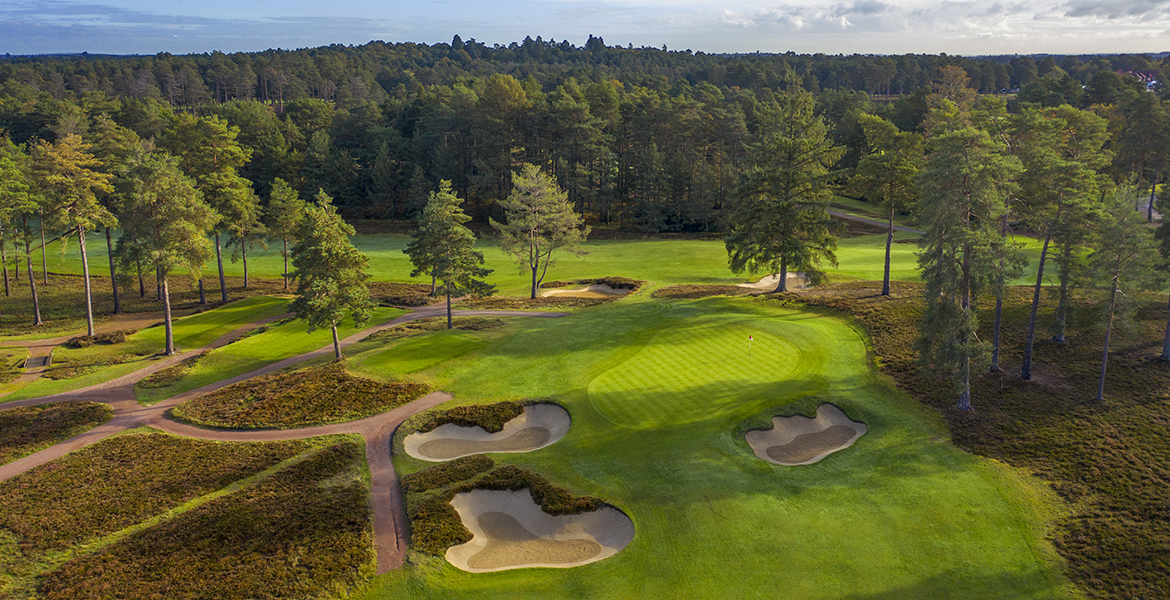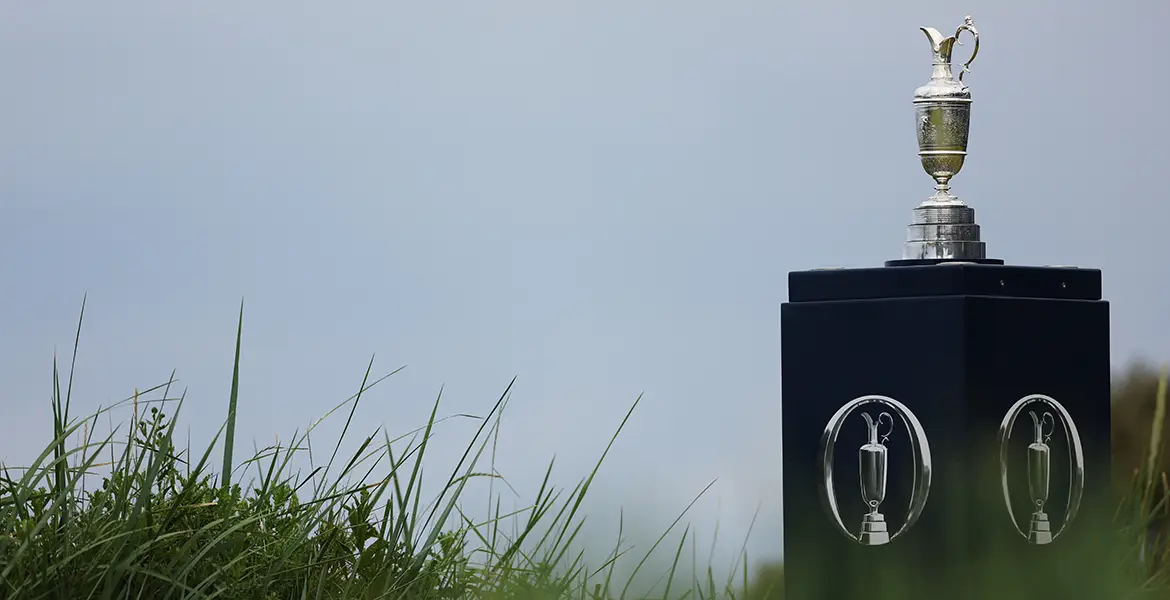By Hal Phillips
Rail Tips
Greater Edinburgh, Dundee, St. Andrews and Aberdeen are densely populated and closely located, so commuter train service between them is frequent. Reservations can be made up to three months in advance, but seats rarely sell out; you can purchase tickets at the station or on board. Be sure to map out a general itinerary and secure tee times before matching departures and arrivals accordingly. Tickets, maps and schedules are available at Scotrail. The Freedom of Scotland Pass offers affordable, flexible packages. Taxis generally queue at larger stations and are easily arranged by phone in the remote locales.
The train idea, I must admit, was my buddy Trevor’s. He’s the one who suggested departing from Leuchars station with nothing but our clubs and heading north for “a wee gowfing holiday” at Carnoustie, Aberdeen and Murcar. Trev’s originally from Sussex, England, but since moving recently to Anstruther, just south of St. Andrews, he’s taken to peppering his normally pommy diction with hints of the local dialect.
Still, when the source of that dialect—and the point of departure for said gowfing holiday—is the east coast of Scotland, I can forgive the contrivance.
“I’m in, ye daft Sassenach,” I confirmed over the phone. “But let’s make a full week of it—start in East Lothian and play our way north.”
“On the train!”
“Aye.”
Golf by train —I can see your eyebrows arching with skepticism, for we Americans have difficulty imagining the game without our beloved automobiles. Of course, we also cherish our lush, emerald-green fairways, golf carts, yardage markers, cart girls and pyramids of range balls. Yet we willingly relinquish these conveniences in Scotland. So why not the rental car, too?
The train harkens back to a different era, one of romance and adventure no longer readily available. Eager to give it a try, I flew into Manchester and quickly connected to Edinburgh, where I cabbed it to the train station, booked my passage east and kicked back, happy to leave the driving to someone else.
There are few sensations quite like sitting on a British train with your golf clubs. That metallic rattle lays your intentions utterly bare to fellow passengers and rail employees, most of whom answer with approving nods. The rattle and roll of a moving train is a potent sleep aid. I began to nod off, but a golf course appeared outside my window—green against a gray sky, flags at full attention—and I was awake again.
“Mind the wind,” warned the ticket puncher, cracking a wry smile as we crept our way through the Edinburgh suburbs. He knew my destination was breezy North Berwick, which remains one of the most train-accessible links in the game.
All aboard
For centuries after golf was conceived, players arrived at the course on foot, horseback or, if the company were honourable enough, by carriage. Trains changed golf forever, making real golf travel possible. In particular, the 1890 completion of the Forth Rail Bridge, which provided a quick route from Edinburgh north to the Kingdom of Fife, exposed the bounty of Scottish links courses to the rest of Britain and ultimately the world.
On his first trip to golf’s homeland, in 1895, A.W. Tillinghast passed over this bridge. “As the train neared St. Andrews and I noted the gradually increasing numbers of the faithful,” he wrote, “I marveled that the popularity of the ancient game had continued, unabated throughout the centuries.”
Rail travel also spurred course construction in Scotland. Shrines like Carnoustie, strategically laid out on the train line between Dundee and Aberdeen, and Cruden Bay farther to the north, were developed to attract rail-riding golfers on holiday to Scotland’s northeast coast. That same formula also produced the New Course at St. Andrews, Gleneagles in the foothills of the Highlands and Turnberry on the west coast.
Part of the fun of the golf-by-rail experience is the old-fashioned nuts and bolts: coordinating with train schedules, the anticipation of disembarkation, checking of superfluous luggage with a station porter and, in the case of our first stop, the jaunty half-mile walk through town to the first tee at North Berwick Golf Club, home to the original Redan hole and more rock walls in the line of play than one ever thought possible.
While North Berwick is eminently walkable from the station of the same name, Gullane, Muirfield and the new Archerfield (36 holes recently built on the site of an ancient links) require short cab rides from either Drem or Longniddry station. For a base of operations, Trevor and I chose Kilspindie House in Aberlady. In addition to providing proximate lodging and superb dining, the Kilspindie offers on-call transportation to various clubhouses.
We had hoped to include Muirfield on our itinerary, but the infamously exclusive club couldn’t accommodate us. “Aye,” one cabbie commiserated. “I’m not sure anyone actually from Scotland is allowed to play Muirfield.” No matter. The No. 1 and No. 2 courses at Gullane were spectacular, Archerfield proved an elegant, canny mix of links and Carolina Lowcountry, and North Berwick was, as advertised, a delight. Next door, The Glen earned best-kept secret honors.
In other words, East Lothian provided plenty to keep us busy before reboarding at Drem, settling down with a good book (Ian Nalder’s Golf in the Age of Steam) and heading north over the Forth Rail Bridge into Fife.
Retrenching of the rails
Sir Benjamin Baker helped build the Aswan Dam and was key in realizing London’s labyrinthine Metropolitan Railway, but it was his design of the gloriously cantilevered 8,000-foot Forth Rail Bridge—regarded as one of the most impressive engineering feats of the 19th century—that cemented his reputation, effectively earning him a knighthood.
Dr. Richard Beeching, on the other hand, was never so honored. Appointed chairman of the newly formed British Railway Board in 1961, Beeching was the government face behind the countrywide dismantling of local rail service during the late ’60s. Under the full force of “Dr. Beeching’s Axe,” 2,128 stations were closed in the name of cost cutting.
The Axe fell deeply in Fife, the very region the Forth Rail Bridge had benefited for decades, where the coastal route serving Crail, Elie, Lundin and Leven was abandoned. Not even hallowed St. Andrews was spared—the railway now bypasses the Auld Grey Toon altogether.
But we refused to let Beeching’s scandalous priorities spoil our trip. It was a short cab ride to St. Andrews from the nearest station, Leuchars, located a few miles west over the Eden Estuary. Once in town, we sampled the cream of the St. Andrews Links Trust courses—the Old, the New, the Jubilee and the Eden, all within walking distance of downtown.
Old Course patrons no longer launch Road Hole drives over working railway sheds; since 1969, when train service to St. Andrews was discontinued, they have played over abandoned railway sheds, which today serve as even less romantic warehousing for the Old Course Hotel.
Americans tend to fixate on St. Andrews, with good reason: It’s golf’s Fertile Crescent. But life has gone on in Fife without its coastal railway, and so did our journey—to the north, where Beeching’s Axe did less egregious damage and another stirring coastal route survives.
We had marked our last night in St. Andrews with a grueling pub crawl through the boisterous streets of the ancient university town. So we arrived at Leuchars station doubly pleased with our preferred mode of travel—nothing like a train ride to sleep off any lingering legacies of The Dunvegan, Lafferty’s, The Cellar Bar, Broons and The Raisin. We crashed hard as we crossed over the Firth of Tay.
The final stop
Brawny Carnoustie rests an hour north of Leuchars, the links coming into view as the train begins its station approach. So close are the station and the first tee that we arrived at 9:30 a.m. and teed off at 9:50.
With a second course at Carnoustie (the charming Burnside, where Ben Hogan qualified for his 1953 Open victory), the fine links of Panmure and Monifieth just a cab ride away, and the Carnoustie Hotel, Golf Resort & Spa serving ably as mother ship, this single-station stop is a golf-by-rail destination on the order of North Berwick. For us, however, it was a mere weigh station, for several more must-plays awaited just up the line, including Stonehaven, a quirky cliffside links with a first tee located half a mile from the platform.
The highlight of this northern leg was clearly Royal Aberdeen, until recently the most underrated links in Britain. Last summer’s Senior British Open telecast was the agent of change. Aberdeen’s Balgownie Course always has been out of this world; now the rest of the world knows it, or least half of it, since television coverage featured only the inward nine.
Balgownie’s outward nine is stunning, elegant, wondrous, spine-tingling—choose your preferred term of exaltation. What’s more, its 10th tee is one of golf’s most sublime. The rousing second nine awaits and a quick glance in the opposite direction reveals more spectacular linksland tumbling into the distance. That’s Murcar, the Balgownie’s estimable neighbor.
Both Murcar and Royal Aberdeen are 10-minute cab rides from Aberdeen station, where the spur to Cruden Bay once took golfers to additional pearls. Today, the spur is no longer in use, so Aberdeen was, for us, the end of the line.
Gone are the days that all the great links along the entire east coast of Scotland were accessible by rail. But with a bit of planning and imagination, it is still possible to relive, in some form, the glory days of golf by rail.







Don’t forget the Ayrshire lines from Glasgow either. Prestwick station is a three foot putt from Prestwick’s first tee and presents a challenging opening swing to keep the ball off the rail line. The same line borders Prestwick St. Nicholas, Western Gailles and Royal Troon and the station is a short ride to them as well as several others in that area and Turnberry to the south.
Enjoyed this very much. I’m taking the Caledonian Express overnight train from London to Edinburgh this summer, but alas I’ll be renting a car to drive out to stay in Gullane for a few days, with rounds at North Berwick, Gullane #1 and Luffness New.